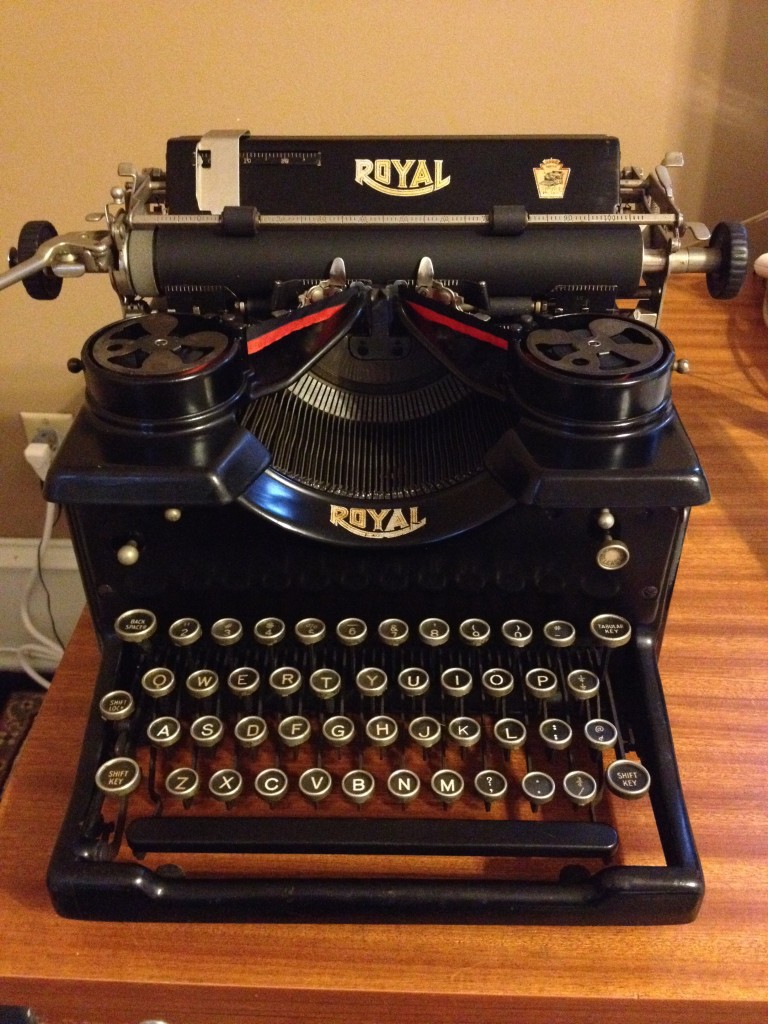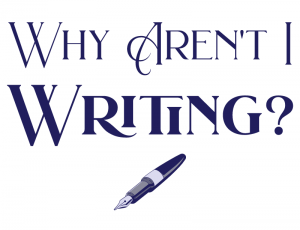Dialogue. How I yearn to be awesome at dialogue. With good dialogue you can not only move the story forward, you can also draw the characters personality, background, attitudes, prejudices, class status, relationships to others and much more. Yet it’s only too easy, and I say this from experience, to use dialogue simplistically, either as a form of exposition or as a way to just glue actions together. Using it to reveal personality and background requires a more deft touch that I certainly am still trying to develop.
Recently, I have come across two fantastic writers whose dialogue is really worth taking the time to study. The first is Naomi Novik, whose Temeraire I recently read and loved. Novik’s dialogue is fantastic, giving us an insight into not just what is going on in that scene, but also where her characters come from, what they’re like, how they think, and what their station is in life. It really is a delight to read, and if you haven’t read Temeraire (His Majesty’s Dragon in the USA) then I cannot recommend it highly enough!
One of my favourite scenes is this:
They landed together, to the anxious lowing of the cattle that had been delivered for Temeraire’s dinner. ‘Temeraire, be gentle with him,’ Laurence said quietly. ‘Some dragons do not have very good understanding, like some people; you remember Bill Swallow, on the Reliant.’
‘Oh, yes,’ Temeraire said, equally low. ‘I understand now; I will be careful. Do you think he would like one of my cows?’
‘Would he care for something to eat?’ Laurence asked James, as they both dismounted and met on the ground. ‘Temeraire has already eaten this afternoon; he can spare a cow.’
‘Why, that is very kind of you,’ James said, thawing visibly, ‘I am sure he would like it very much, wouldn’t you, you bottomless pit,’ he said affectionally, patting Volatilus’s neck.’
‘Cows!’ Volatilus said, staring at them with wide eyes.
‘Come and have some with me, we can eat over here,’ Temeraire said to the little grey, and sat up to snatch a pair of the cows over the wall of the pen. He laid them out in a clean grassy part of the field, and Volatilus eagerly trotted over to share when Temeraire beckoned.
‘It is uncommonly generous of you, and of him,’ James said, as Laurence led him to the cottage. ‘I have never seen one of the big ones share like that; what breed is he?’
‘I am not myself an expert, and he came to us without provenance; but Sir Edward Howe has just today identified him as an Imperial,’ Laurence said, feeling a little embarrassed; it seemed like showing off, but of course it was just plain face, and he could not avoid telling people.
James stumbled over the threshold on the news and nearly fell into Fernao. ‘Are you— oh, Lord, you are not joking,’ he said, recovering and handing his leather coat off. ‘But how did you find him, and how did you come to put him into harness?’
Laurence himself would never have dreamed of interrogating a host in such a way, but he concealed his opinion of James’s manners; the circumstances surely warranted some leeway. ‘I will be happy to tell you,’ he said, showing the other man into the sitting room. ‘I should like your advice, in fact, on how I am to proceed. Will you have some tea?’
‘Yes, although coffee if you have it,’ James said, pulling a chair closer to the fire; he sprawled into it with his leg slung over the arm. ‘Damn, it’s good to sit for a minute; we have been in the air for seven hours.’
What I love about this is how the dialogue and the description work so well together. Temeraire, we have already learnt by this point in the book, is a smart dragon and although he speaks in short sentences with relatively simple constructions, he clearly has a level of understanding and intelligence that poor Volatilus wouldn’t even know how to dream of. He shows kindness, compassion, imagination and empathy; his actions and speech both reflect these personality traits.
Poor old Volly, on the other hand, is a much simpler beast and can manage only one astonished word. But even with such restricted dialogue, we get a clear impression of Volly’s intellectual limitations, warmth of heart, and enthusiasm for cattle.
When it comes to the humans in the scene, we can see Laurence’s stiff formality, sharply contrasted by James’ lack of the same. Again, dialogue and action reinforce one another, but you are also provided with a bit of extra information. Like his dragon, Laurence is solicitous of others’ wellbeing, but is also very aware of status and propriety.
Throughout the book, Novik uses dialogue to flesh out her characters, using speech patterns appropriate not just to the period — the book is set in the Napoleonic wars — but also fitting to station, career path, and even family position. Laurence is a Navy man from an aristocratic family, but he’s not the first born son so he’s highly aware of interpersonal relationships and status differentials, and thus how people should modify their behaviours according to whom they are speaking.
When surrounded by and talking to his subordinates on ship, for example in the scene shortly after his ship has captured a French vessel and, along with it, Temeraire’s egg, he’s very formal:
No one spoke, and in silence Laurence stared at the shining curve of eggshell rising out of the heaped straw; it was scarcely possible to believe. ‘Pass the word for Mr. Pollitt,’ he said at last; his voice sounded only a little strained. ‘Mr. Riley, pray be sure those lashings are quite secure.’
But when talking privately to the people on board that he trusts the most, and with whom he has the closest relationships, his formality drops a little:
He [Pollitt] bustled away, and Laurence exchanged a glance with Gibbs and Riley, moving closer so they might speak without being overheard by the lingering gawkers. ‘At least three weeks from Madeira with a fair wind, would you say?’ Laurence said quietly.
‘At best, sir,’ Gibbs said, nodding.
‘I cannot imagine how they came to be here with it,’ Riley said. ‘What do you mean to do, sir?’
His initial satisfaction turning gradually into dismay as he realised the very difficult situation, Laurence stared at the egg blankly. Even in the dim lantern light, it shone with the warm lustre of marble. ‘Oh, I am damned if I know, Tom. But I suppose I will go and return the French captain his sword; it is no wonder he fought so furiously after all.’
Notice that we not only get signals regarding Laurence and Riley’s relationship, but we also get action in the dialogue, as Laurence talks about returning the French captain’s sword.
The richness of Novik’s dialogue is a delight, and the way she uses it to progress the plot and develop characters and relationships makes the book zip along at a very satisfying pace. It is my aim over the next month or two to really study Temeraire and Novik’s use of dialogue in order to improve my own, as her’s is some of the best I’ve read in a long time.
My second example of awesome dialogue is a bit of a cheat, really, as it’s a radio comedy. Cabin Pressure is written by John Finnemore and concerns the slightly hapless crew of a charter airline, MJN Air. Starring Benedict Cumberbatch as Captain Martin Crieff, Roger Allam as First Officer Douglas Richardson, Stephanie Cole as airline owner Carolyn Knapp-Shappey, and John Finnemore as her rather gormless son who also works as the airline’s only steward, Arthur Shappey.
Cabin Pressure is one of those radio gems where every word is exactly where it should be. There is no flab in the script, and no gun gets put on the table in the first scene without going off before the last. Jokes are set up with meticulous attention to detail and timing, and the voice acting is just superb, as you’d expect from such an awesome cast.
Of course, radio comedies are all dialogue, with only a few sound effects to add any necessary extra information, so they have to be sharp and well observed. But they also have to tell you everything you need to know about the characters without exposition. Here’s a snippet of Cabin Pressure, Series 1, Episode 1, from the Cabin Pressure Fans website.
MARTIN: Blessed.
DOUGLAS: Ah, yes, of course. May.
MARTIN: Mm-hm, yep. Cant.
(Flight deck door opens.)
ARTHUR: Here we are, gents. Coffee with nothing in it; tea with everything in it. Great cabin address, Douglas. I love cargo flights.
DOUGLAS: Thank you, Arthur.
MARTIN: Ooh, Eno!
DOUGLAS: Ooh, eeno?
MARTIN (more slowly): Ooh: Eno.
DOUGLAS: Ah, yes! Sewell.
ARTHUR: Ooh, what are we playing?
MARTIN: Brians of Britain.
ARTHUR: There-there must be loads of them. Umm … uh …
DOUGLAS: Well, not to worry. As they come to you.
ARTHUR: Ooh, who was that guy? Umm, oh, grey-haired, did that game show, “Can I have a P please, Bob?” Umm, oh, what was his name?
DOUGLAS: Your hope being that it was Brian?
ARTHUR: Yeah, Brian … uh … Brian …
MARTIN: Bob Holness. It was Bob Holness.
ARTHUR: That’s it! Oh. Well, does he count anyway?
DOUGLAS: Does Bob Holness count in our list of people called Brian? What the hell, yes, he does. Well done!
FITTON AIR TRAFFIC CONTROL (over radio): Golf Tango India, expect twenty min delay due runway inspection. Enter the hold at Arden; maintain seven thousand feet.
MARTIN (into radio): Golf Tango India, roger hold at Arden. Maintain seven thousand feet. Can you confirm delay only twenty minutes?
FITTON AIR TRAFFIC CONTROL (blowing out a breath): Probably. All depends, really.
MARTIN (exasperated): Thank you, Tower. Hugely informative as ever. Out.
(Radio off.)
MARTIN: Sorry, chaps. Looks like we’d better divert to Bristol.
ARTHUR: Bristol? Why?
MARTIN: Fitton’s got a runway closure. We’d have to hold for twenty minutes.
ARTHUR: But Bristol? That’s miles away.
MARTIN: Yes. Luckily enough, though, we’re in an aeroplane, especially designed to be good at going miles away quite quickly.
ARTHUR: Yeah, but my car’s at Fitton.
MARTIN: Oh, well, then, let us by all means circle round it until we drop out of the sky.
DOUGLAS: D’you know, Martin, all these years and I’ve never been to Bristol.
MARTIN: Well, get ready for a treat.
DOUGLAS: I dunno. I was rather hoping not to break my duck.
ARTHUR: Skipper, are you sure there’s not enough fuel to wait? ’Cause there’s always a little bit left when the gauge shows red.
MARTIN: Yes, oddly enough, Arthur, a jet aircraft isn’t as precisely similar to a Vauxhall Corsa as a stupid person might imagine. We’re going to Bristol.
ARTHUR: What do you reckon, Douglas?
DOUGLAS: We could go to Bristol. I believe people do. However, we’ve easily enough fuel spare to hold for twenty minutes, maybe even thirty.
MARTIN: No, I’m sorry but we’re diverting.
ARTHUR: Yeah, hang on a tick, though. If Douglas reckons twenty minutes …
MARTIN: No, let’s not ‘hang on a tick’. Let’s listen to the captain, shall we?
DOUGLAS: Of course, Martin, if you say we divert, then divert we shall.
MARTIN: Thank you.
DOUGLAS: Unless of course we were to smell smoke in the flight deck.
MARTIN: What?
DOUGLAS: I’m just saying: if by any remote chance we smelled smoke in the flight deck, we would of course be duty bound to land at the nearest available airfield with immediate priority – in this case, by a happy coincidence, Fitton.
MARTIN: Yes, maybe; but I don’t smell smoke in the flight deck.
(Sound of a match being struck.)
DOUGLAS: How about now?
MARTIN: What are you suggesting, Douglas?
DOUGLAS: We tell the Tower we smell smoke, which we do. We get to land straightaway. They check the aircraft, don’t find anything; “One of life’s little mysteries, but jolly good boys for taking no chances.” Everybody’s happy and there’s jam for tea.
ARTHUR: Right! That’s – you know, that’s really clever!
MARTIN: No, I’m sorry, but absolutely not.
DOUGLAS: I used to do it all the time at Air England.
MARTIN: Well, you’re not at Air England now. Where you are now is in the co-pilot’s seat and on the way to Bristol. You’ll like it. They have a lovely suspension bridge.
DOUGLAS: Well, shall I just sat comm Carolyn before we make our final decision? It’s rather an expensive diversion …
MARTIN: No, we have made our final decision. I have decided, and as Carolyn knows, whilst in flight, I am supreme commander of this vessel.
DOUGLAS: Golly. Captain Bligh flies again.
MARTIN: Douglas, I’m not impressed by your Air England mates. When you’re on Captain Bligh’s aircraft, you can do it his way, but when you’re on mine, you do it mine. Is that understood?
DOUGLAS: Yes.
MARTIN: Yes what?
DOUGLAS: Yes it is.
MARTIN: Yes it is what?
DOUGLAS: Yes it is understood.
MARTIN: Yes it is understood what?
DOUGLAS: Yes it is understood … please?
MARTIN: I’m waiting.
DOUGLAS: Martin, you’re not seriously asking me to call you ‘sir’.
MARTIN: Yes I am. Why’s that so hard to believe?
DOUGLAS: Well, to select just one reason from the fifteen or sixteen that present themselves, I’m old enough to be your father.
MARTIN: Not unless you started very young.
DOUGLAS: I did.
MARTIN: Right, well, I think your age and your previous role is giving you a rather skewed view of the chain of authority on this aircraft, and maybe a little observation of the formalities will help remind you which one of us is still the captain. So: is that understood?
DOUGLAS: Yes …
(Long pause.)
DOUGLAS (grimly): … sir.
MARTIN: Thank you. (Into radio) Fitton Approach, Golf Tango India. In view of your delay, request diversion Bristol.
Even without hearing the dialogue spoken, we get a very clear idea of who these people are: Martin, the captain, is impatient with other people, overly cautious, insecure (particularly with respect to his position as captain), officious, and not as intelligent as he likes to think he is.
Douglas, on the other hand, is possibly too clever, and looks down on people who think they’re smart but aren’t. That said, he’s got more empathy than Martin and doesn’t take his frustration with Martin out on Arthur, who really is rather lacking in the intellectual capacity area. Douglas is frustrated by the fact that he’s a first officer and not the captain, and his causal disregard for authority turns into something more deliberate when it’s Martin’s authority that he’s disregarding.
Now, Arthur. What Arthur lacks in intelligence he makes up for in enthusiasm, being easily impressed and even more easily pleased. He’s the sort of person you’d find hard to actively dislike, but his similarity to a Labrador puppy might get a bit tedious after a while.
Listen to the whole episode, or indeed, the series (plural), and you’ll rapidly see how well rounded the Cabin Pressure characters are. Again, the dialogue does more than just tie scenes together or set up the next chunk of description or action, it actually tells us almost everything we can ever know about these characters.
My aim for future stories is to produce dialogue that is as fat with information as Temeraire and Cabin Pressure. It’s not just about what people are saying, it’s how they say it. It’s the the words they choose and the cadence of their speech. And it’s also what they don’t say, the words they don’t use, the meaning they leave between the lines, even without knowing it.









